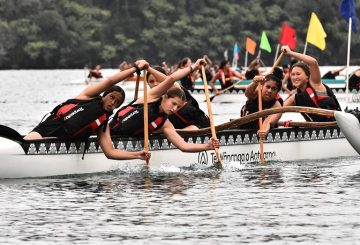뉴질랜드 공립 병원의 선임 의사들은 Te Whatu Ora에게 개인 의료 보험료를 지불하도록 요청하는 것에 간신히 반대했습니다.이 제안은 의사들로부터 40% 이상의 지지를 받았지만 통과에 필요한 과반수를 확보하지 못했습니다.
공립 병원이 직면한 어려움이 커지면서 뉴질랜드에서는 민간 의료 보험에 대한 수요가 증가하고 있습니다.최근 베이 오브 플렌티 (Bay of Plenty iwi) 의 한 서비스업체는 다른 선택의 여지가 없다고 생각한다고 말하면서 직원들을 위해 민간 의료 보험을 구입했습니다.
이번 투표는 급여를 받는 의료 전문가 협회 회원들의 불만이 반영된 결과입니다.협회의 사라 달튼 (Sarah Dalton) 사무국장은 일부 회원들이 공공 시스템을 통해 의료 서비스를 받는 것에 대해 우려하고 있다고 말했습니다.그러나 이 제안은 모두를 위한 양질의 공공 의료 서비스를 옹호한다는 노조의 사명과 모순되기 때문에 부분적으로는 실패했습니다.
Dalton은 또한 많은 선임 의사와 치과의사들이 높은 급여를 받고 있기 때문에 스스로 민간 의료 보험에 가입할 수 있다고 언급했습니다.이 제안은 협회가 고려하고 있던 것은 아니었지만, 2023년 말 연례 회의에서 회원들이 고용주인 테와투 오라 (Te Whatu Ora) 에 대한 불만을 표현하기 위한 방안으로 제기한 것이다.
강조한 또 다른 문제는 의료 분야에서 일하는 것이 개인에게 주는 높은 피해로 인해 피로와 탈진으로 이어진다는 점입니다.달튼은 협회가 건강 및 복지 문제에 더 집중해야 한다고 말했다.
뉴질랜드 간호사 협회는 회원들이 민간 의료 보험에 대해 논의했지만 보험금 청구로 제안된 적은 없다고 언급했습니다.민간 외과 병원 협회는 최근 몇 년간 고용주 제도가 보험 증권의 성장을 이끌었다는 점을 인정하면서도 사립 외과 병원은 의사를 고용하지 않기 때문에 모델이 공립 병원과 다르다는 점을 분명히 했습니다.협회는 민간 의료 보험 제공에 대해 집단적인 입장을 취하지 않으며 이에 대한 데이터를 수집하지 않습니다.




























































